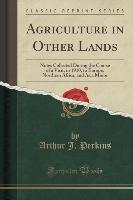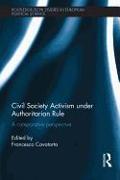Agriculture in Other Lands
BücherAngebote / Angebote:
Excerpt from Agriculture in Other Lands: Notes Collected During the Course of a Visit, in 1910, to Europe, Northern Africa, and Asia Minor
The feature which must most strongly impress the visitor interested in agricultural matters is that rural Egypt is one vast object lesson to the irrigationist. Here is a country that is to all intents and purposes practically rainless supporting, nevertheless, a flourishing rural population, and which, if we except the Suez Canal and the much-fleeced tourist, is wholly dependent for its revenues on the agricultural produce of the soil. The total area of Egypt proper is given as about 400, 000 square miles, the great bulk of which is a barren waste, carrying not a vestige of vegetation from one end of the year to the other. Of this area in 1909 there were about 6, 500, 000 acres under cultivation - 4, 000, 000 acres in the Delta and about 2, 500, 000 acres in the narrow Valley of the Nile. It is calculated that the raising of the Assouan Dam will have the effect of winning over from the desert an additional 1, 000, 000 acres. By themselves these figures convey but an inadequate image of the facts as they may be observed here - on the one side an absolutely desert waste, and contiguous with it a few million acres of marvellous fertility, the productiveness of which cannot probably be matched anywhere else in the world. One cannot describe cultivated Egypt better than by the statement that it has all the appearance of a huge vegetable garden, from every corner of which the utmost is extracted by the industrious cultivator.
This great productiveness Egypt owes, as is well known to everybody, to the Nile both directly and indirectly. The Nile in the course of ages has built up a soil of great fertility, which it continues to enrich and supply with all essential moisture at the present time. I had imagined that there must be in Egypt some form of unirrigated agriculture practised. I am informed, however, that, apart from a few sandy acres occasionally sown to barley in the neighborhood of Alexandria, this is not the case. That this should be so will readily be understood when it is stated that, with a very high average temperature, the rainfall at Alexandria to the north of the Delta is about 8in., whilst that of Cairo at its southern apex is only 1in. Agriculture, therefore, in its widest sense appears to be possible only on such lands as come within the reach of the Nile waters.
The complete absence of rain both in winter and summer renders necessary the use of irrigation waters for both winter and summer sown crops.
About the Publisher
Forgotten Books publishes hundreds of thousands of rare and classic books. Find more at www.forgottenbooks.com
This book is a reproduction of an important historical work. Forgotten Books uses state-of-the-art technology to digitally reconstruct the work, preserving the original format whilst repairing imperfections present in the aged copy. In rare cases, an imperfection in the original, such as a blemish or missing page, may be replicated in our edition. We do, however, repair the vast majority of imperfections successfully, any imperfections that remain are intentionally left to preserve the state of such historical works.
Folgt in ca. 5 Arbeitstagen




